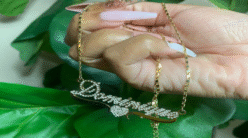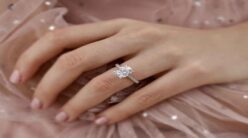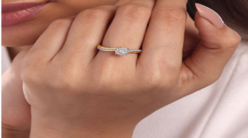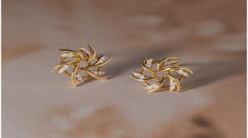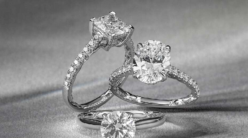Choosing your wedding ring is an important moment for several reasons. By its symbolism, the alliance is the representation of the union of two beings, but also of two families. This jewel is also the symbol of love and the fidelity of the couple. This symbolism also has universal value, since it is found in many countries around the world. It is this representation that gives the wedding ring such an essential dimension for a piece of jewelery that one hopes to wear all one’s life.
Among the precious stones, the diamond is the stone most chosen by future brides, because it is the most noble and represents a symbol of eternity. It is therefore quite naturally that we will find the diamond wedding ring as a safe bet for a wedding. To help you choose your wedding ring, here are some tips and information on diamond rings that will help you better understand the world of jewelry.
A wedding ring that suits you
The alliance is not a jewel like the others, you will have to wear it for years. Ask yourself if this alliance will still please you in 10 years, and if it is not just a fad… The classic solitaire or the ring set with small diamonds will in this sense be more timeless and more recommended for a wedding.
The choice of this exceptional jewel that is the diamond alliance will also depend on your personality. If you are more of a reserved nature, a ring with a bezel-set stone or a row of small diamonds will be more discreet. Conversely, a more extroverted person will prefer an imposing claw-mounted solitaire or a more substantial ring.
A few years ago, the diamond wedding band was very classic, today it offers more original and refined shapes that can highlight different personalities.
You should also consider the fact that this wedding band will be worn on a daily basis. Choose a ring with which you are comfortable and which will adapt to your lifestyle.
jewelry wedding ring
What type of alliances to choose?
Several elements can determine the type of your alliance: the size of the stone, the quality of the stone, the shape of the diamond, the metal chosen for the ring. We will go into more detail on these elements later in this article.
The different styles of rings
There are different styles of rings, categorized by how the stones are set. You can then choose:
a half-turn wedding ring (the ring will only be set on one half, in general it will be small stones arranged in rows),
a full circle wedding band (the stones will be arranged all around the ring, but the stones located on the palm side may interfere with daily use, so it is not the most recommended type of ring),
a unique diamond (a stone mounted as a solitaire remains a timeless item for a wedding ring).
The quality of the diamond
The quality of a diamond is determined by the 4 Cs : carat (weight), color (color), clarity (transparency), cut (size).
The unit of weight for a diamond is the carat . The higher the carat, the larger the stone and therefore the more valuable it is.
The more colorless a diamond is , the more expensive it will be. Only laboratory experts are likely to detect the different shades of color in a diamond. The closer the color is to white, the higher the quality of the stone.
The transparency or purity of the diamond is also an element of classification. All diamonds have imperfections, that is, inclusions in the heart of the stone.
The quality of the stone cut will also impact the value of the stone. The more perfect the cut , the more it will contribute to the brilliance of the diamond.
Diamond shapes
The choice of the shape of the stone will be a determining factor in the rendering of your wedding ring. Shine of stone? Originality of the form? Choose the right compromise according to your tastes and your budget.
the round brilliant: this form of stone is the most dazzling, it is made up of 58 facets (this cut was invented by Marcel Tolkozsky, a Belgian engineer and diamond dealer who developed this cut using scholarly mathematical calculations to highlight optimally the brilliance of the stone),
the princess: this cut presents the diamond in a square shape (this type of cut will suit an imposing ring with a large stone),
the baguette: rectangular in shape, this cut is popular for jewelery with a contemporary look (however, it is not the cut that highlights the brilliance of the stone the most),
the oval: it is a round diamond shape at the base which has been modified, it has 55 facets and gives the advantage of lengthening the finger,
the marquise or shuttle: this oval style cut with points at the top and bottom has come back in force in recent years, we like its vintage side from the time of the crown jewels,
the pear: this cut combines the brilliance and the design of the round brilliant and the marquise (on one side pointed, on the other round, its teardrop shape will bring a touch of fantasy to your alliance),
the claw diamond: the ring is set above the ring with claws to hold it, it highlights the stone, giving the impression that it is floating,
the closed setting: the stone is embedded in the metal of the ring, it will be suitable for small diamonds (discreet, this stone will give a modern touch to the diamond alliance).

